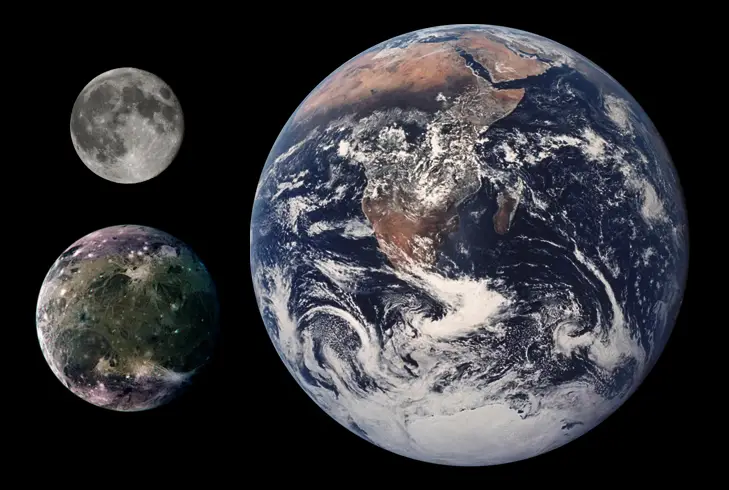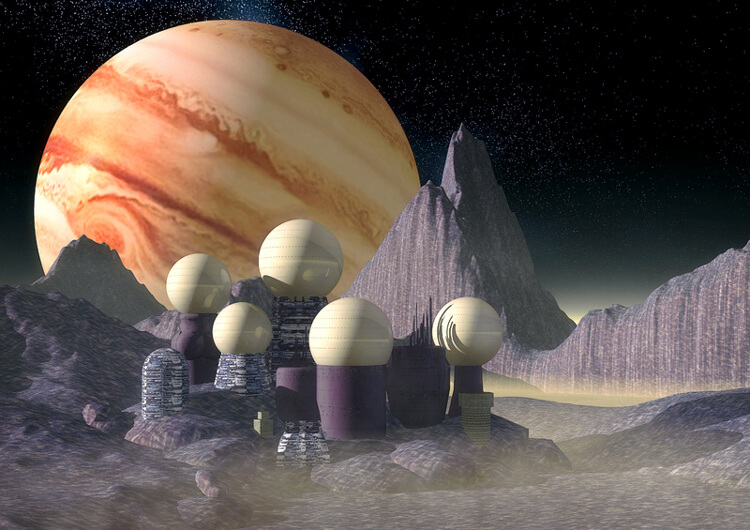
15th February 2014 The first global map of Jupiter's largest moon, Ganymede The first global, detailed geologic map of Ganymede – the largest moon in our Solar System – has been produced by researchers in the U.S.
Using images from NASA's Voyager flyby (1979) and the orbital Galileo probe (1995-2003), researchers have created the first global geological map of Jupiter's largest moon, Ganymede. With its varied terrain and possible underground ocean, Ganymede is considered a prime target in the search for habitable environments in our Solar System, and the researchers hope this new map will aid in future exploration. The work – led by Professor Geoffrey Collins of Wheaton College in Massachusetts – took years to complete. It was published this week by the U.S. Geological Survey and is available as a PDF download along with a geospatial database. "This map illustrates the incredible variety of geological features on Ganymede and helps to make order from the apparent chaos of its complex surface," said Robert Pappalardo of NASA's Jet Propulsion Laboratory in California. "It is helping planetary scientists to decipher the evolution of this icy world and will aid in upcoming spacecraft observations." Jupiter Icy Moons Explorer (JUICE) is scheduled to reach the gas giant in 2030. This hi-tech orbiter will study Ganymede in extreme detail, identifying possible locations for a surface landing. Rovers might then follow later in the 2030s. NASA is contributing a U.S.-led instrument and hardware for two European-led instruments on JUICE.
Since its discovery in 1610, Ganymede has been the focus of repeated observation – first by ground-based telescopes, then later flyby missions and spacecraft orbiting Jupiter. These studies depict a complex, icy world, whose surface is characterised by a striking contrast between its two major terrain types: the dark, very old, highly cratered regions, and the lighter, relatively younger regions marked with an extensive array of grooves and ridges. According to researchers, three major geologic periods have been identified for Ganymede that involve the dominance of impact cratering, then tectonic upheaval, followed by a decline in geologic activity. This map illustrates surface features, such as furrows, grooves and impact craters, allowing scientists to decipher distinct geologic time periods for an object in the outer Solar System for the first time. It will enable researchers to compare the geology of other gas giant moons, because almost any type of feature that is found on other icy satellites has a similar feature somewhere on Ganymede.
"The surface of Ganymede is more than half as large as all the land area on Earth, so there is a wide diversity of locations to choose from," Collins said. "Ganymede also shows features that are ancient alongside more recently formed features, adding historical diversity in addition to geographic diversity." Human colonisation of Ganymede is a possibility in the future – but will face major technical challenges. Although it possesses a magnetosphere (the only known moon with such a feature), it is overshadowed by Jupiter's magnetic field. Ganymede receives about 8 rem of radiation per day. It is more likely that Callisto (0.01 rem a day) would be settled first.
Comments »
|









